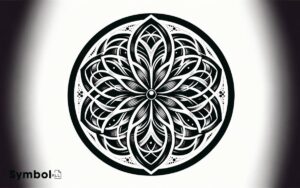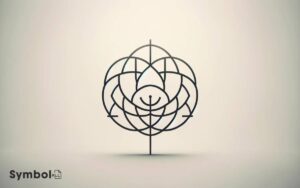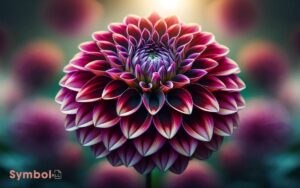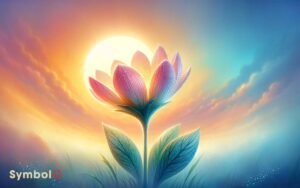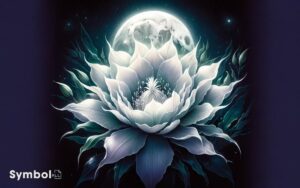What Does the Camellia Flower Symbolize? Love, Devotion!
You’ll find the camellia flower symbolizes a rich tapestry of meanings, deeply intertwined with love, devotion, and the cycle of life.
Originating from East Asia, it embodies eternal love and complex emotions, mirroring life’s depth and longevity through its botanical characteristics.
Each color variation of the camellia expresses different facets of love and desire, with red camellias specifically signifying deep longing. This flower’s perennial growth reflects the continuous nature of love, evolving through various life stages.
Its historical and cultural significance spans across ancient and modern contexts, bridging a connection that empowers its universal symbolism. Uncovering further will reveal its intricate layers and diverse interpretations.
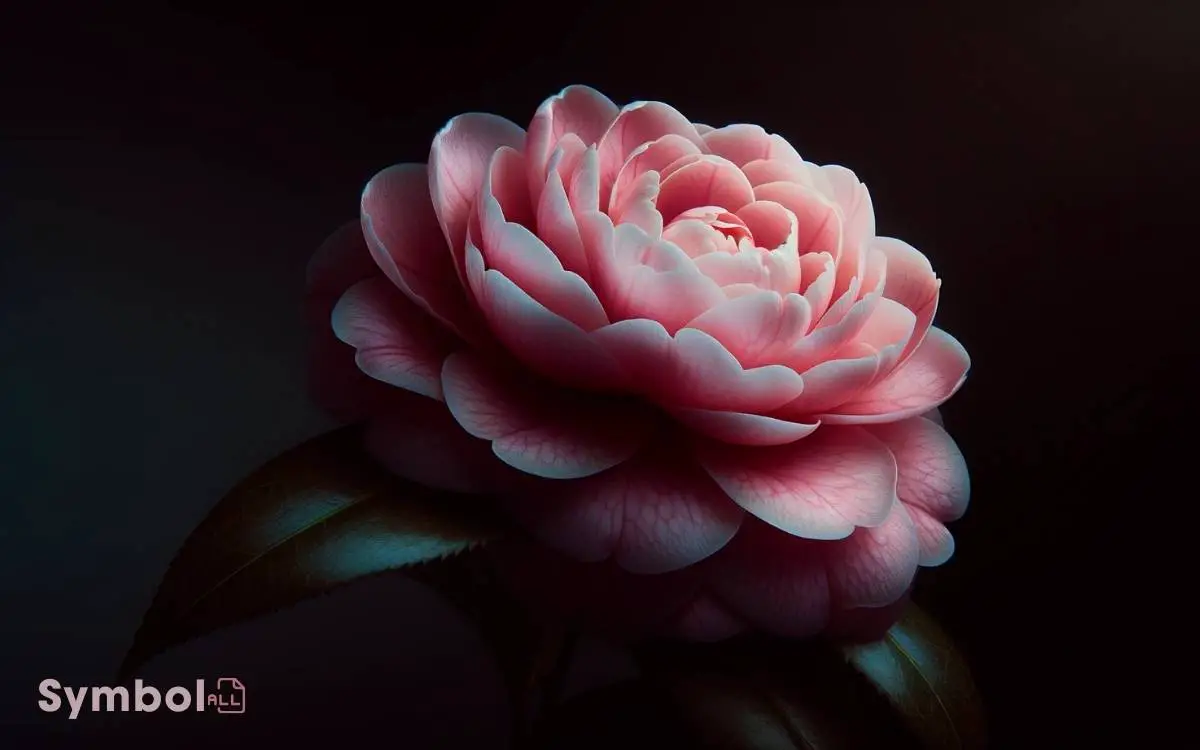
Key Takeaways
Historical Significance
Throughout history, the camellia flower has symbolized love, affection, and admiration, deeply ingrained in various cultures’ traditions and rituals. Originating from East Asia, its significance has evolved, reflecting societal values and beliefs.
In Japan, the camellia, or ‘Tsubaki,’ represents the divine, often used in religious ceremonies and spiritual practices. Its resilience during the cold season symbolizes life and essential, embodying the cycle of life and death in nature.
Meanwhile, in Victorian England, the camellia’s introduction brought about a nuanced language of flowers, where specific colors conveyed distinct messages. Red camellias spoke of deep desire, while white varieties symbolized adoration, transcending mere verbal communication.
This complex symbolism showcases the camellia’s role in expressing human emotions, intertwined with cultural and historical contexts.
Love and Adoration
You’ll find the camellia flower embodies eternal devotion through its perennial nature, blooming with resilience and consistency year after year.
Its vibrant hues and intricate petal structures serve as a powerful expression of intense passions, symbolizing deep, enduring love.
This botanical marvel demonstrates love’s complexity and depth, mirroring human emotions in its form and longevity.
Eternal Devotion Manifestation
In the domain of symbolic meanings, the camellia flower stands as a powerful emblem of eternal devotion, embodying deep love and adoration. This manifestation isn’t just a matter of cultural significance; it’s supported by the camellia’s botanical characteristics.
For instance, the resilience of camellia blooms, which withstand the cold of late winter or early spring, mirrors the enduring nature of true devotion. Additionally, the variety of colors, from pure white to deep red, symbolizes different depths of love and commitment.
Scientifically, the camellia’s perennial growth pattern represents the continuous cycle of life and love, reinforcing the concept of everlasting affection. You’ll find that this symbolism is deeply ingrained, reflecting a universal truth about the nature of committed love.
Passions Intense Expression
The camellia flower symbolizes intense passions, embodying love and adoration through its vivid colors and resilient nature. This symbolism isn’t arbitrary; it’s deeply rooted in the flower’s biological characteristics.
Camellias exhibit a robust vitality, thriving in a variety of climates, which parallels the enduring nature of profound emotional attachments.
Their broad color spectrum, from pure white to deep red, mirrors the complex emotions involved in love and passion. Specifically, red camellias are often associated with deep desire and heartfelt longing, signifying a lover’s intense passion.
The flower’s layered petals also suggest complexity and depth in feelings, echoing the multifaceted nature of love.
In essence, the camellia serves as a natural emblem for the profound and varied expressions of love and adoration.
Desire and Longing
As you explore the camellia’s role in expressing desire and longing, you’ll discover its roots as an ancient symbol of love across various cultures.
Modern interpretations of the flower have evolved, yet they retain a deep connection to its traditional significance, highlighting a universal understanding of yearning.
The cultural significance of the camellia in this scenario offers a rich tapestry for analysis, revealing how its symbolism transcends time and geography.
Ancient Love Symbols
Throughout history, camellia flowers have symbolized desire and longing, serving as ancient emblems of love that communicate deep, passionate emotions without words.
Here’s why they’ve been so significant:
- Vivid Colors: The camellia’s diverse palette, from pure white to deep red, symbolizes various stages of love and desire, making it a versatile symbol in romantic contexts.
- Seasonal Bloom: Blooming in the colder months, camellias represent enduring love that survives and thrives despite adversity.
- Cultural Significance: In Eastern traditions, particularly in Japan and China, camellias are associated with the divine and the eternal, linking them to unending love.
- Historical Use: Royals and nobles exchanged camellias to express feelings of love and yearning, embedding these flowers with a rich history of romantic symbolism.
This intricate blend of color, resilience, cultural importance, and historical usage cements the camellia’s role as an ancient symbol of desire and longing.
Modern Interpretations
Moving beyond their historical roots, camellias today continue to embody desire and longing within modern contexts and interpretations.
This shift from ancient to contemporary symbolism isn’t arbitrary; it’s deeply rooted in the camellia’s biology and enduring aesthetic appeal.
Camellias produce vibrant, lush flowers during the colder months, a rarity that heightens their allure and symbolizes the warmth of passion amidst the cold of separation or distance.
Further, their resilience blooming year after year with undiminished beauty mirrors the enduring nature of desire and the persistence of longing in human relationships.
This botanical steadfastness, coupled with their rich, velvety petals, offers a tangible metaphor for the depth and durability of emotional longing in a modern setting, bridging the gap between the flower’s ancient significance and its current symbolic interpretations.
Cultural Significance
In examining the cultural significance of the camellia flower, it’s important to understand how its representation of desire and longing resonates across various cultures, reflecting a universal theme in human emotion.
Here’s why the camellia is a profound symbol:
- Historical Depth: The camellia’s roots in Eastern symbolism, particularly in China and Japan, underscore its role in expressing unspoken desire and deep longing.
- Color Variations: Different hues of camellias carry distinct meanings, with red symbolizing love and white signifying longing, enhancing its emotional depth.
- Literary Presence: Literature and poetry often employ the camellia to signify secret love or the yearning for a lost one, imbuing narratives with a layer of complexity.
- Ceremonial Use: In ceremonies, camellias represent a wish for the beloved’s return, embodying a tangible manifestation of desire and anticipation.
Beauty and Perfection
Renowned for its exquisite beauty, the camellia flower symbolizes the quest for perfection in its form and hue, enchanting observers with its flawless appearance.
Each petal stands as proof of nature’s meticulous craftsmanship, arranged in a symphony of symmetry that appeals to the human eye’s innate preference for balance and proportion.
The vibrant colors of the camellia, ranging from pure whites to deep reds, not only contribute to its visual allure but also serve as a canvas, showcasing the flower’s genetic prowess.
This botanical marvel’s broad spectrum of colors is the result of complex pigmentation processes, governed by specific genes that regulate anthocyanin production.
These pigments not only guarantee the camellia’s mesmerizing hues but also protect it from various environmental stresses, further enhancing its embodiment of beauty and resilience in pursuit of perfection.
Transience of Life
Beyond its enchanting beauty, the camellia flower also embodies the ephemeral nature of life, serving as a poignant reminder that existence, much like the bloom’s short-lived splendor, is temporary and fleeting.
Here are four key aspects that highlight this symbolism:
- Lifespan: Camellias bloom and peak quickly, symbolizing the swift passage of time.
- Cycle: Their life cycle, from bud to fall, mirrors human life stages.
- Resilience: Despite their brief bloom, camellias resist harsh winters, representing the human spirit’s resilience amidst life’s transience.
- Renewal: The annual reblooming signifies renewal and the cycle of life, reminding you that endings pave the way for new beginnings.
Understanding these aspects deepens your appreciation of life’s fleeting beauty.
Wealth and Prosperity
Camellia flowers symbolize not only the fleeting nature of life but also embody wealth and prosperity, reflecting their historical significance in cultures that value them as harbingers of good fortune.
Originating from Eastern Asia, these flowers have been cultivated for centuries not just for their beauty, but for their association with financial success and material abundance.
In particular, the camellia’s vibrant blooms and resilient nature are thought to represent the endurance and growth necessary to achieve prosperity.
Scientifically, the variety and resilience of camellias have made them valuable in horticultural trade, further linking them to economic wealth.
Culturally, presenting camellias as gifts has been a way to wish someone success and prosperity, a practice rooted in the belief in the flower’s power to bring about wealth.
Recognition and Praise
You’ll find the camellia flower often symbolizes recognition and praise, particularly in the contexts of award ceremonies and as a representation of artistic achievement.
Its presence in such settings isn’t arbitrary; research shows that the camellia’s distinct form and enduring nature resonate with themes of excellence and lasting impact.
This makes it an ideal emblem for acknowledging remarkable contributions and milestones in various fields.
Award Ceremony Significance
In many cultures, the camellia flower symbolizes admiration and perfection, making it a fitting emblem for award ceremonies that recognize and praise outstanding achievements.
Here’s why:
- Visual Representation: The camellia’s vibrant and flawless bloom visually represents the pinnacle of achievement and the pursuit of excellence.
- Historical Significance: Culturally, camellias have been associated with honor and respect for centuries, adding a layer of historical depth to their presence at ceremonies.
- Universality: Across different cultures, the camellia maintains similar meanings, making it a universally recognizable symbol for accolades.
- Psychological Impact: The receipt of a camellia can boost the recipient’s morale and motivation, reinforcing the value of their efforts and encouraging continual excellence.
This scientific analysis underlines the camellia’s role in symbolizing high achievement and respect in award contexts.
Artistic Achievement Symbol
As an emblem of artistic success, the camellia flower garners recognition and praise, embodying both the creativity and dedication inherent in exceptional artistic achievement.
Its diverse varieties and vivid colors symbolize the vast spectrum of creativity, mirroring the unique expressions found in art.
The camellia’s resilience, flourishing in both sun and shade, parallels the artist’s journey navigating through periods of obscurity and illumination to create impactful work.
This flower’s continuous bloom, even in the chill of winter, serves as a metaphor for enduring artistic passion and the relentless pursuit of excellence.
Presenting a camellia to an artist isn’t just an act of admiration; it’s a nuanced acknowledgment of their perseverance, innovation, and the indelible mark they leave on the canvas of humanity.
Deep Respect
Deep respect, a value deeply ingrained in various cultures, is symbolically represented through the camellia flower, embodying honor and admiration in its vibrant petals.
This symbolism isn’t arbitrary; it’s rooted in the flower’s unique characteristics:
- Longevity: Camellias have a remarkably long blooming period, reflecting the enduring nature of respect.
- Resilience: They thrive in a variety of conditions, symbolizing the steadfastness of admiration through various challenges.
- Purity: The camellia’s distinct, unblemished petals represent the sincerity behind deep respect.
- Beauty: Its aesthetic appeal underscores the idea that respect, much like the flower, adds beauty and enrichment to our lives.
Understanding these symbolic associations offers a deeper appreciation for the camellia’s role in expressing profound respect.
Cultural Interpretations
Building on the symbolic significance of the camellia flower, various cultures have imbued it with unique interpretations that reflect their values and traditions.
In Japan, the camellia, or ‘Tsubaki,’ symbolizes the divine, often used in religious and sacred ceremonies. It’s also associated with the samurai, embodying the qualities of honor and loyalty due to its nature of blooming in the cold, showing perseverance.
Meanwhile, in China, the camellia represents the union between two lovers, signifying everlasting love and devotion. This interpretation stems from the flower’s characteristics of durable, yet delicate beauty.
Western interpretations have also adopted the camellia as a symbol of admiration and perfection, reflecting its flawless form and the variety of colors it comes in, each carrying its own unique message.
Varieties and Meanings
The camellia flower, with its myriad varieties, embodies a wide spectrum of meanings and symbols, each distinct in its representation and significance.
You’ll find that the varieties not only differ in color and form but also in the depth of their symbolism:
- Camellia Japonica: Known for its large, beautiful blooms, this variety symbolizes love, affection, and admiration.
- Camellia Sasanqua: Often associated with purity and the fleeting nature of life, reflecting the Japanese concept of mono no aware.
- Camellia Reticulata: This variety, with its intricate, layered petals, represents longevity and eternal love.
- Camellia Sinensis: The source of tea leaves, symbolizing healing, rejuvenation, and reflection.
Each variety, through its unique characteristics, offers a nuanced understanding of the camellia’s symbolic language.
Gifting Camellias
Understanding the symbolism of various camellia varieties enriches the act of gifting these flowers, aligning the giver’s intentions with the specific meanings attributed to each type.
When you select a camellia for someone, you’re not just picking a flower; you’re conveying a message.
For instance, a red camellia symbolizes love, passion, and deep desire, making it an ideal choice for romantic occasions. A pink camellia suggests longing, while white camellias represent adoration and are perfect for expressing genuine, platonic love.
It’s essential to take into account the recipient’s cultural background as well, as interpretations can vary. In Japan, camellias symbolize the divine, and in Korea, they represent faithfulness and longevity.
Gifting camellias becomes a thoughtful process, necessitating an understanding of both the botanical significance and cultural nuances.
Conclusion
In the silent dance of nature, camellias whisper tales of the heart, each hue unfolding secrets. Imagine, as petals unfurl, they reveal love’s complexity from passionate desire to the gentle touch of adoration.
Yet, beneath their beauty lies a stark reminder of life’s fleeting moments. Gifting these blooms, you’re not just handing over a flower, but a meticulously coded message, steeped in history and culture.
So, choose wisely, for in the language of camellias, every shade tells a story, every blossom a bittersweet truth.

